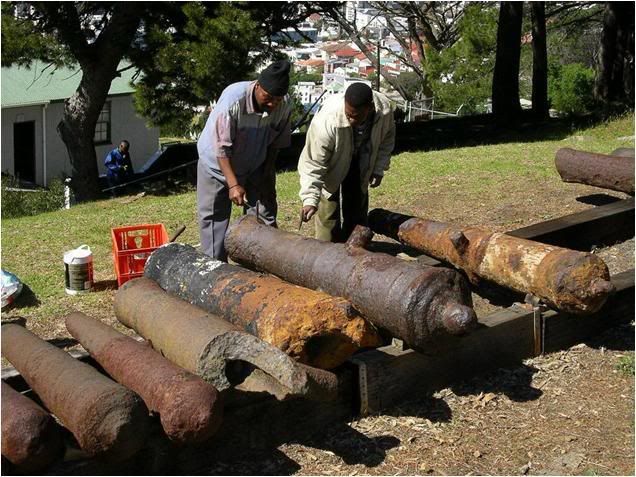kevthebassman
40 Cal.
- Joined
- Sep 23, 2007
- Messages
- 322
- Reaction score
- 1
I've happened upon a piece of 3" brass bar stock, about 16" long. Is there any potential for turning this into a safe scale cannon? Or is the brass too soft to be useful?


Titus said:I cringe when I hear that somebody wants to (or has) made a cannon of brass. :nono: Its not suitable for cannon tubes as its actually a very brittle metal. :youcrazy: Its has extremely poor molecular cohesion.
No one should encourage cannon barrels made of brass, they make beautiful ornaments, but when it comes to working, firing models, stick to steel. If you want the colour of brass, stick to the time proven metal called Bronze. Anyone who argues with this should rather do further research into metallurgy. Err on the side of safety. :hatsoff:
Titus said:I cringe when I hear that somebody wants to (or has) made a cannon of brass. :nono: Its not suitable for cannon tubes as its actually a very brittle metal. :youcrazy:
Titus said:When iron guns started to appear as a rule, rather than the exception, they had to cast then many times thicker and hence they where only used on ships and as coastal guns (due to their extreme weight)
Now you have me wondering how to tell if my large valve stems are bronze or brass?? :hmm:Squire Robin said:Original "bronze" guns were 80-90% copper, some tin, zinc and lead with numerous other elements in minor to trace quantities.
Squire Robin said:Titus said:When iron guns started to appear as a rule, rather than the exception, they had to cast then many times thicker and hence they where only used on ships and as coastal guns (due to their extreme weight)
Are you sure about that. Early bronze guns tend to be overly long, makes them look skinny.
Dud Dudley writing in his book Mettallum Martis on iron making back in 1665 lists the different irons he makes but infuriatingly tells little about how he did it.
He is quite clear that you would use his best quality, most fined, Grey Iron for ordnance. It being the "more malleable and tough".
They had the technology :thumbsup:

juancho said:Hi guys,
I would like to know if aluminum bronze is a sutable material for cannons.
kevthebassman said:Squire Robin, do you happen to know of any pictures of that statue? Sounds interesting.
juancho said:Hi guys,
I would like to know if aluminum bronze is a sutable material for cannons.I know is very tough to machine, and I've been using it for decades for heavy duty bushings and wear plates.You need good carbide tools to machine it and the chips are usualy blueish purple.Is very expensive though.
Thanks for sharing your knowledge :thumbsup:

Enter your email address to join: